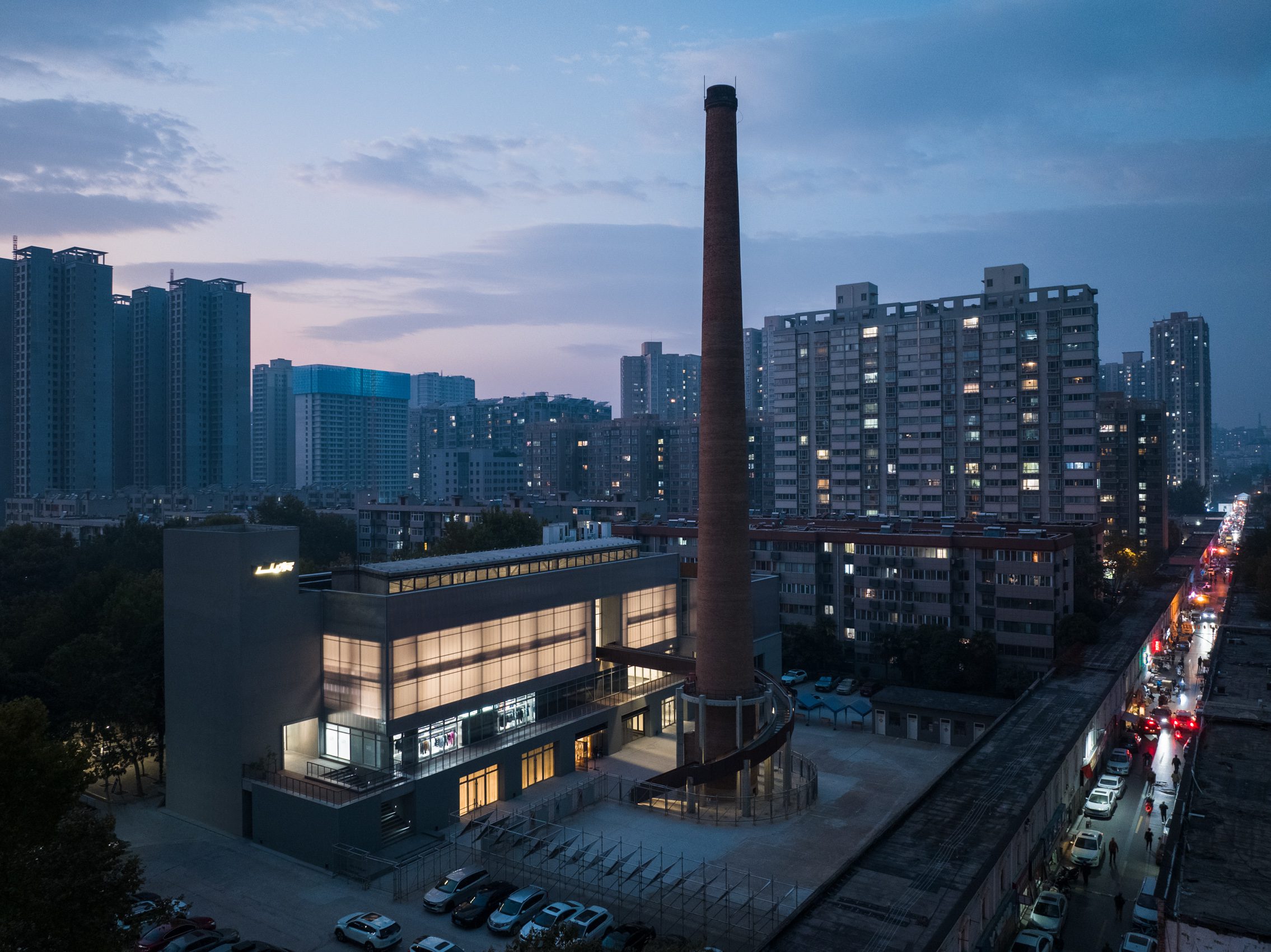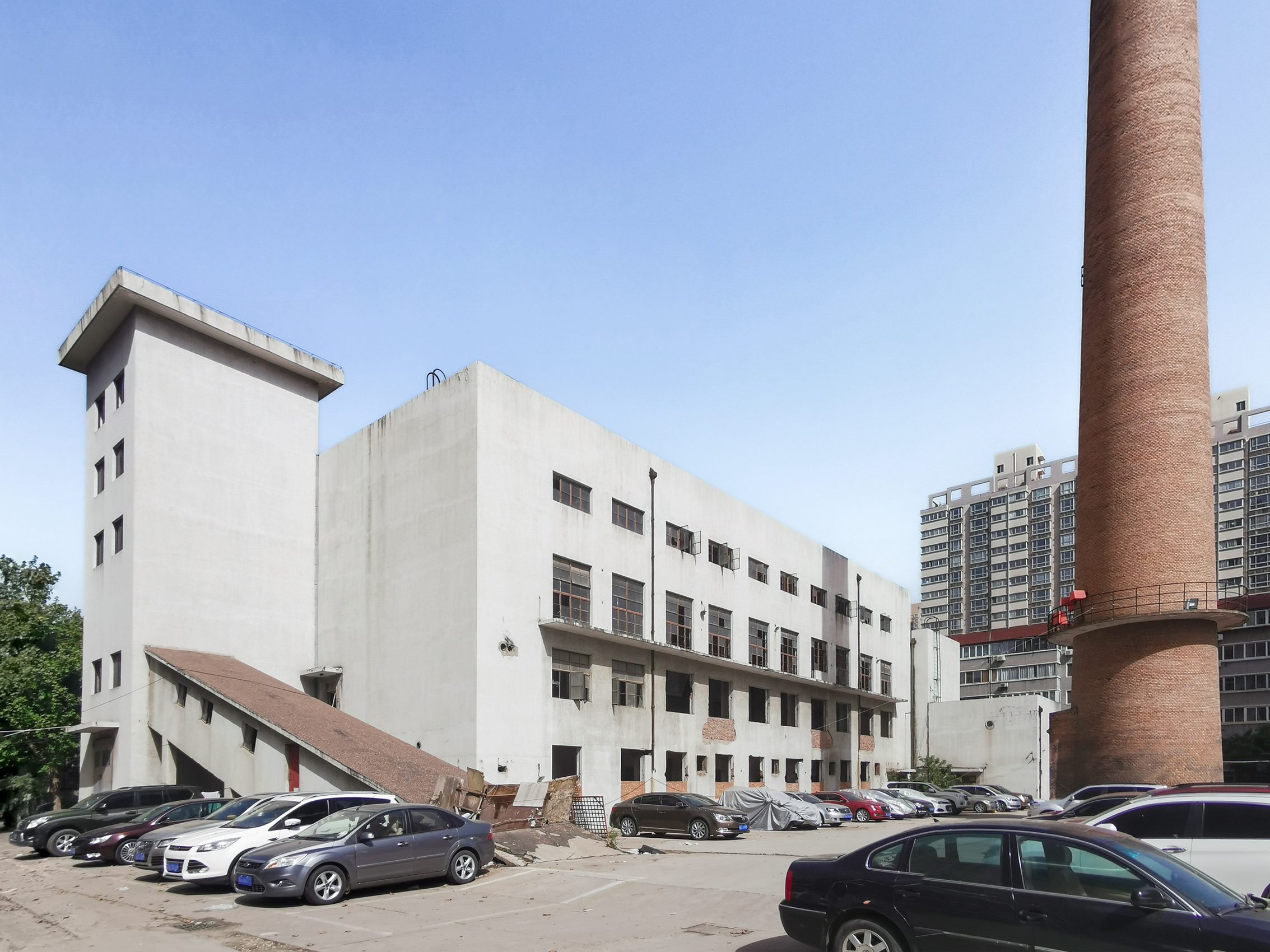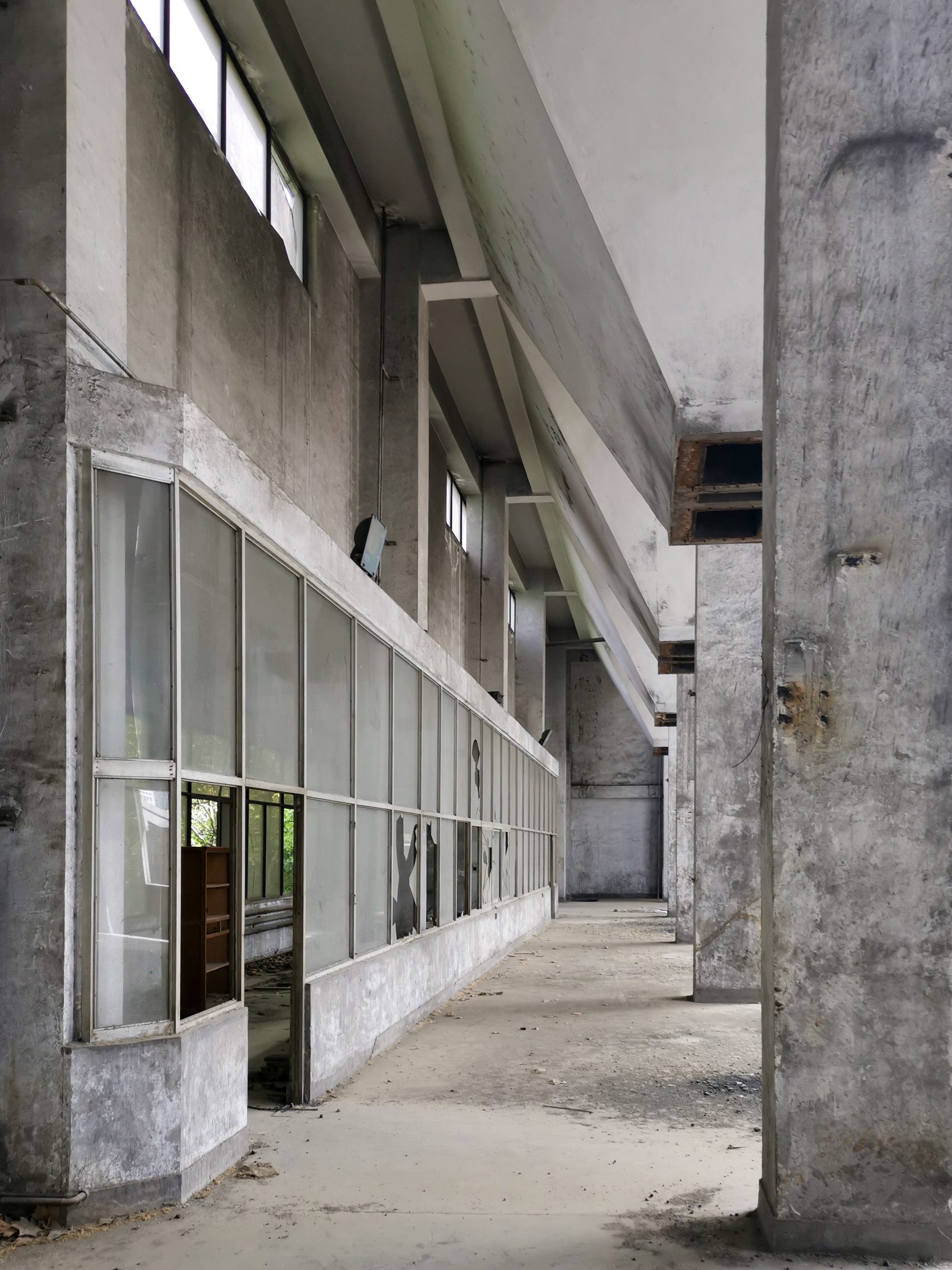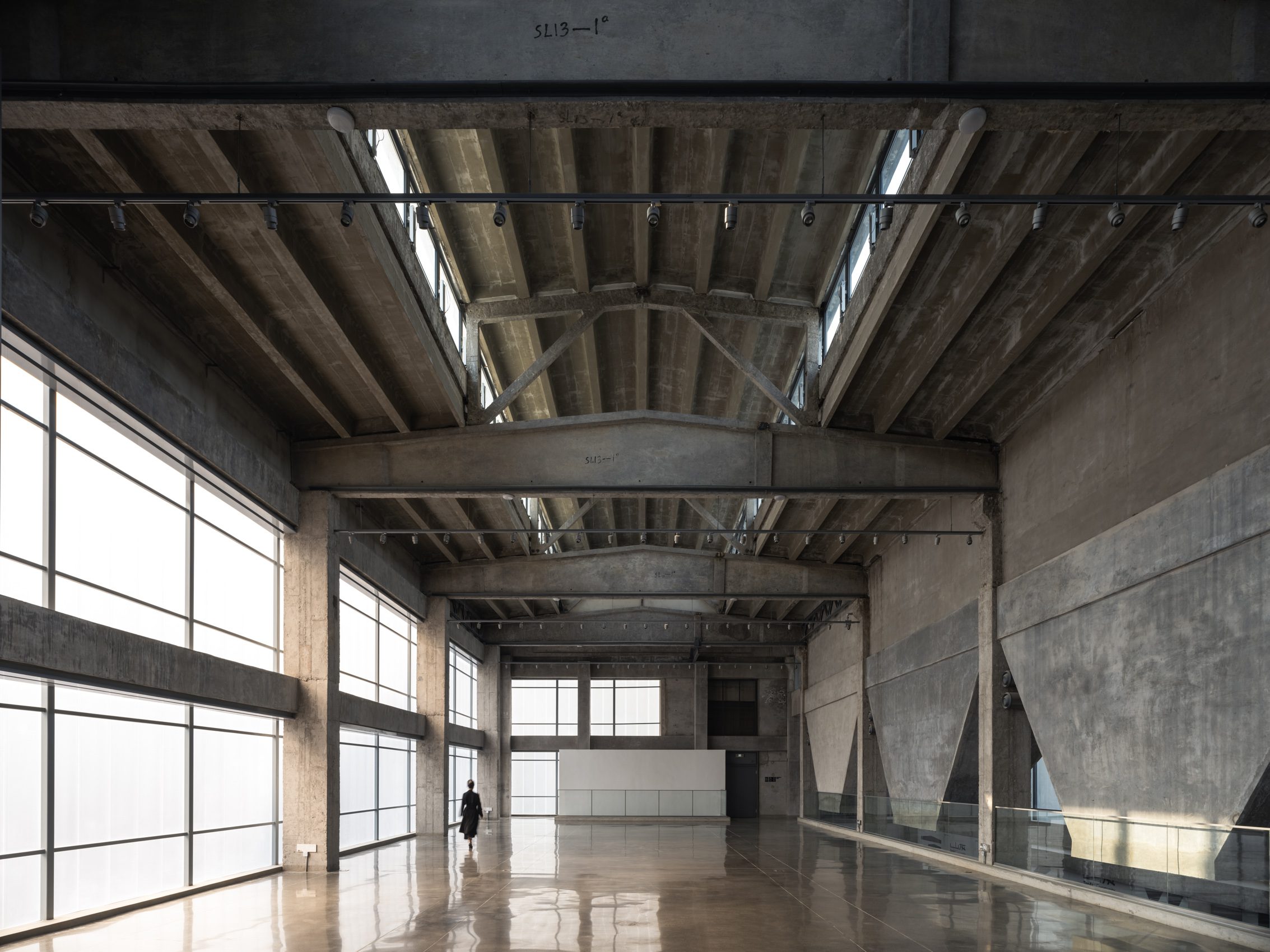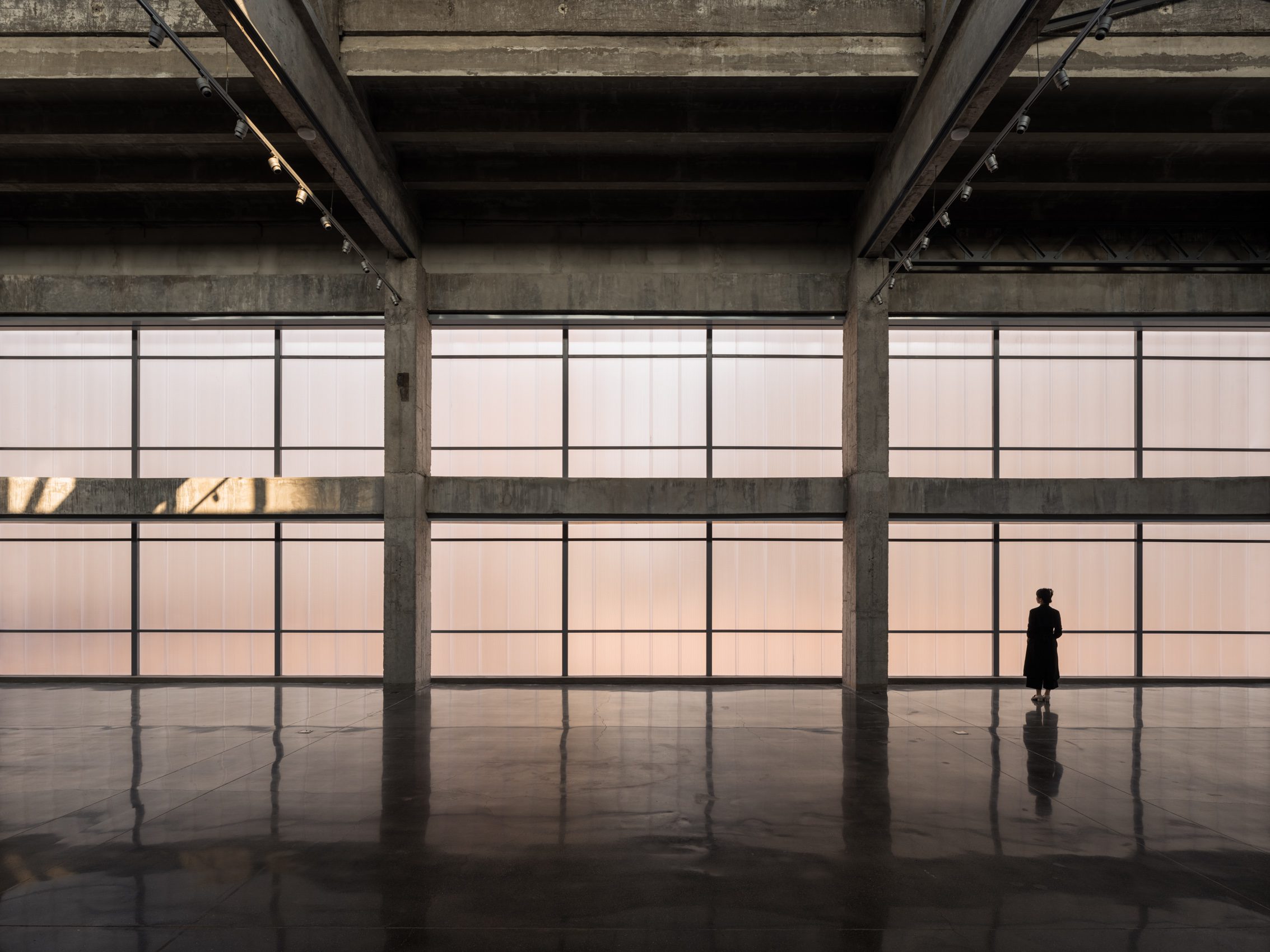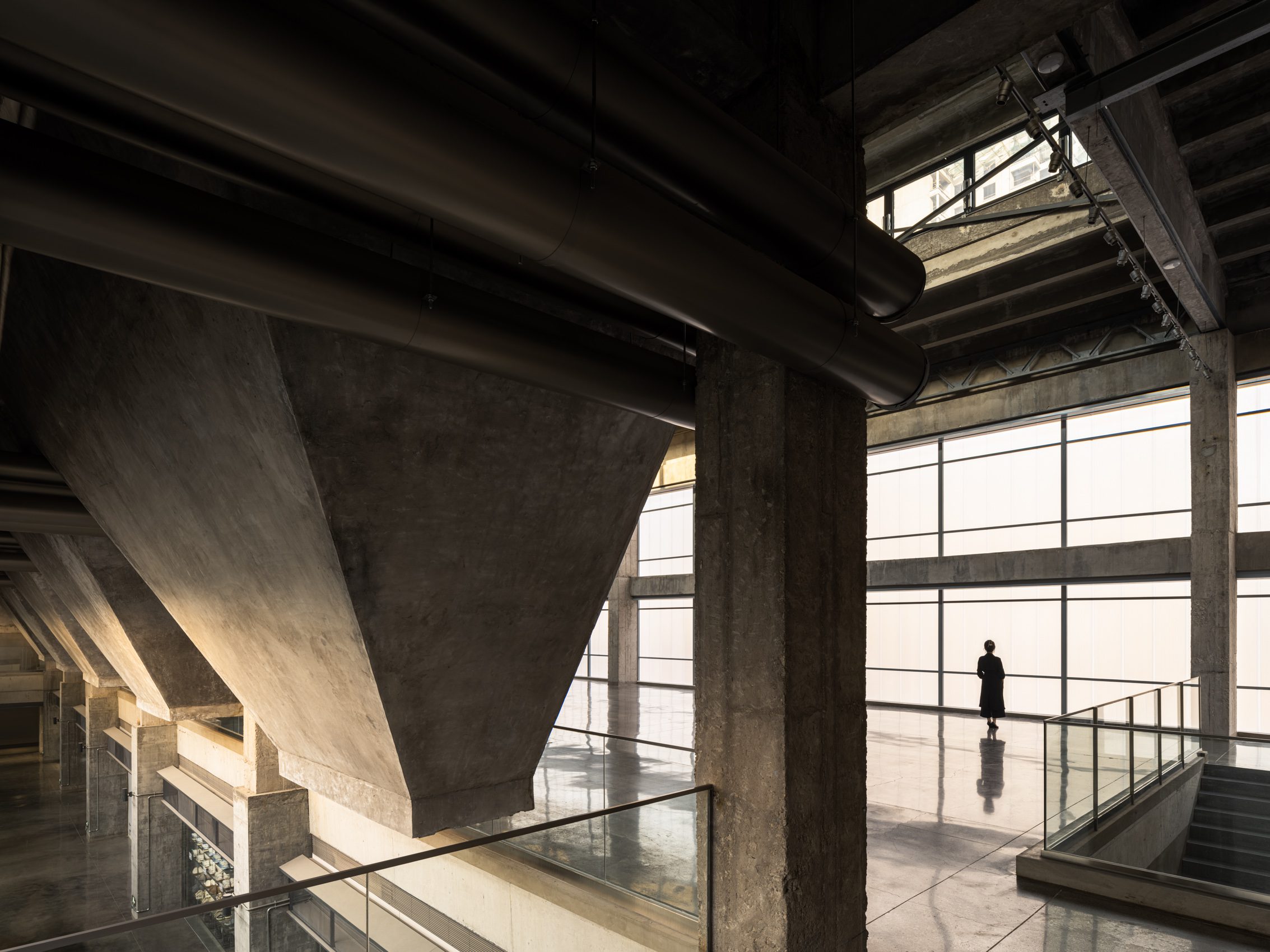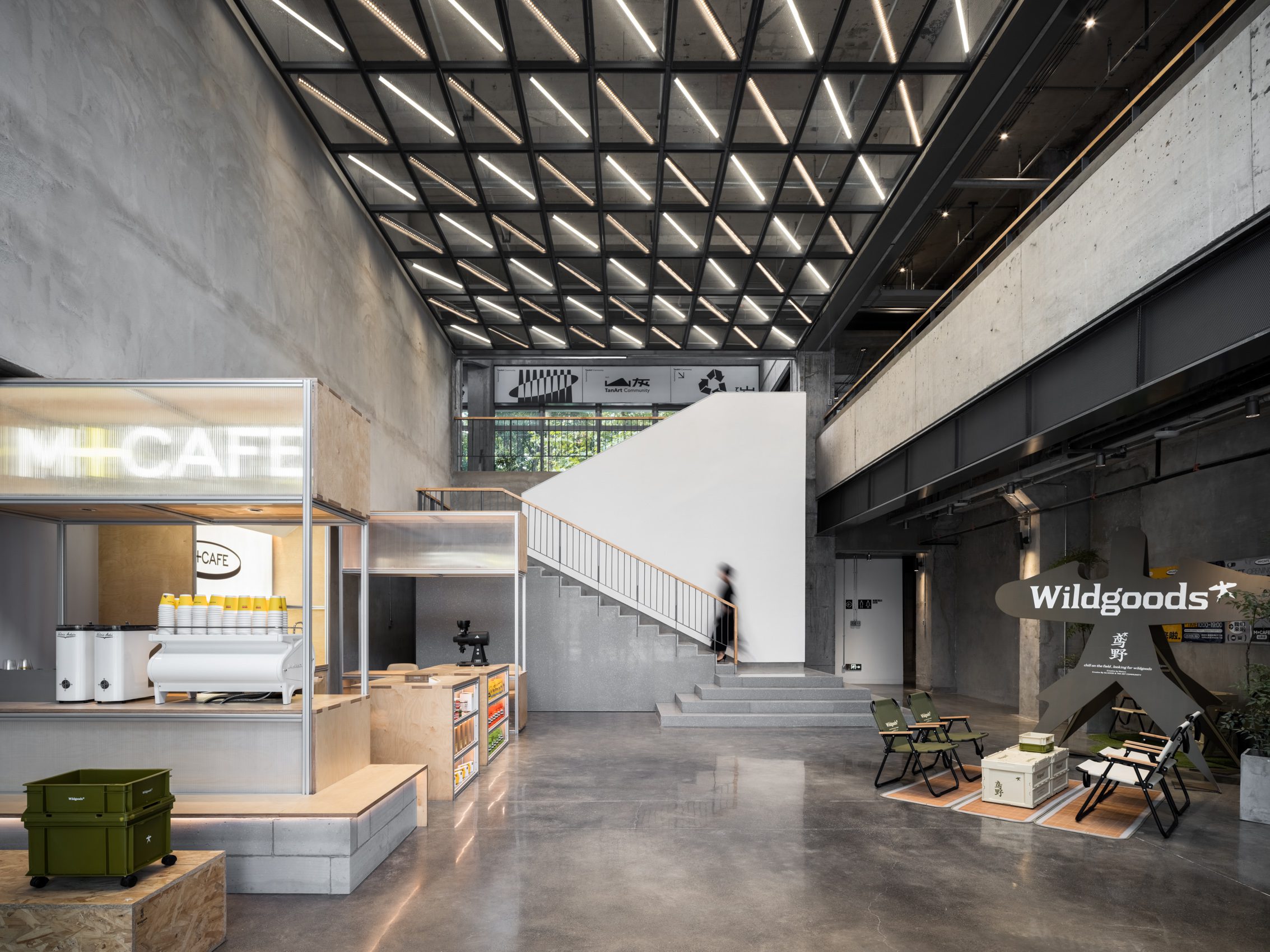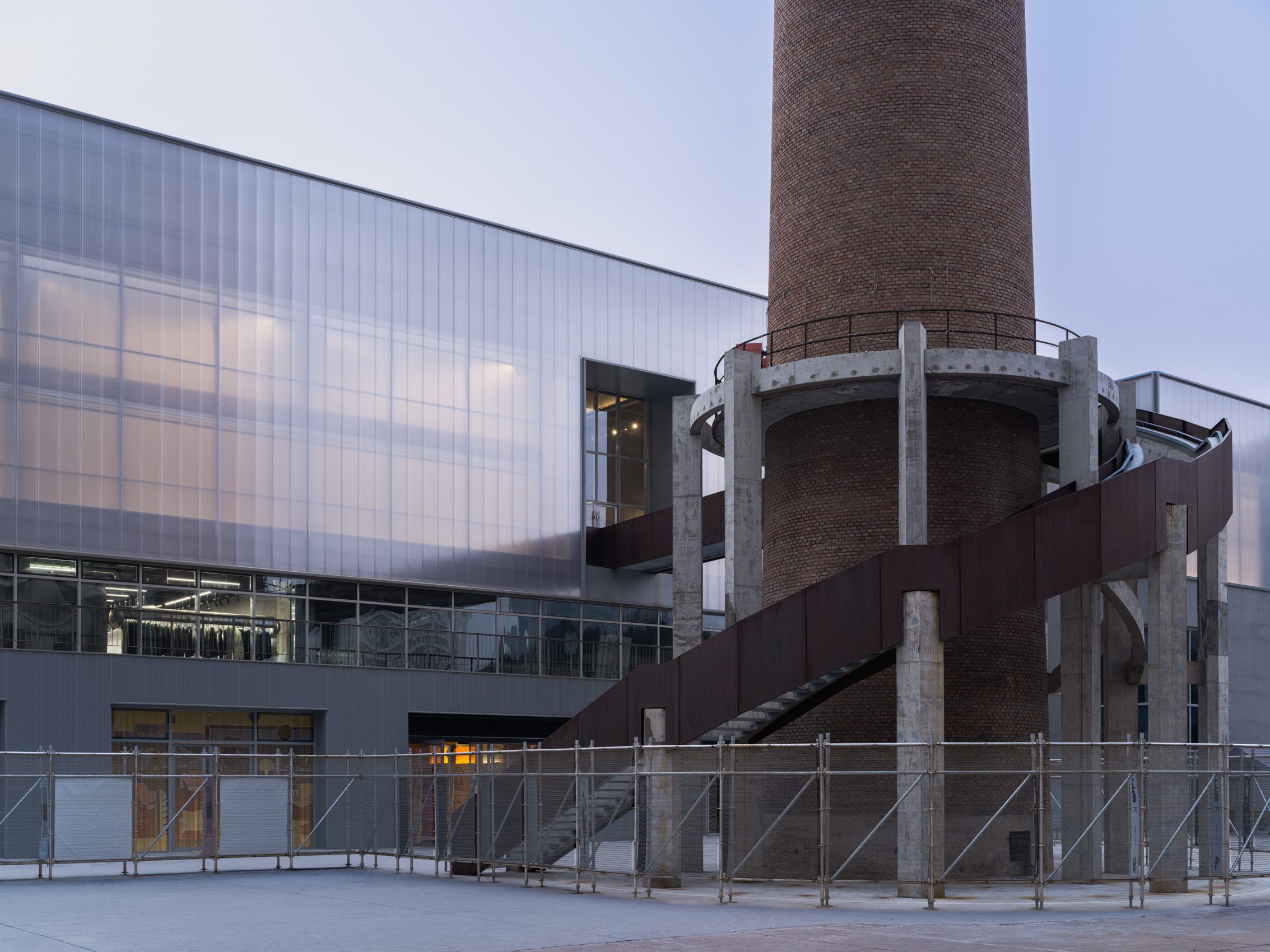Renovation of the Boiler Station at Xi’an Shiyou University/
Nomos Architects
Project Details

Location(City/Country):
Xi’an, Shaanxi / China
Tipology:
Exhibition / Commercial Retail
Year (Design/Construction):
2019 / 2022
Area (Net/Gross):
3988 m2 / -
Operational Carbon emissions (B6) kgCO2e/m2/y:
-
Embodied Carbon emissions (A1-A3) kgCO2e/m2:
-- Polycarbonate panels are used within the elevation to both improve daylighting as well as thermal performance.
- The flexibility allowed by the architectural intervention helps to future proof the space.
- Programme is utilised as an economic tool to ensure the facilities future survival.
- This building will surpass the average lifespan of most buildings in China.
The Xi’an Shiyou University residential campus boiler station was planned in 1994 and finally completed in 1997. However, due to changes in the urban heating system, it was closed in 2014. Despite being relatively new, the boiler station which is surrounded by urban residential buildings presented an intriguing image of a historical ruin prior to its retrofit.
This type of coal-burning boiler station was once common to North China. However, with the shift to a different type of energy supply system, facilities of this kind are no longer built. The tall chimneys and large coal scuttles that were designed with instrumental rationality have become obsolete. These types of boiler stations have become a historical symbol of their time, even though most are still under 30 years old.
The heritage site, located in the core urban district, was not suitable for redevelopment due to its size and heritage , however an opportunity existed for its renovation and reuse.
Programme was utilised as an economic tool to ensure the facilities urban survival through its conversion to a mixed-use art community, which is a new typology to Xi’an. The appropriate functions of this conversion serve to protect the building’s original frame from being divided into cheap co-working units, a current trend throughout China which is affecting many other urban industrial heritage sites.
To accommodate this transformation, a runway connecting the outdoor square and the main exhibition hall on the third floor was added. In addition to serving functional needs, the runway also highlights the new interventions applied to both the old chimney and the era it represents.
To bring in soft light and improve the building’s thermal performance, the original elevation was clad with polycarbonate panels. This new material also introduces a different scale, contrasting dramatically with the surrounding residences and emphasising the building’s previous industrial characteristics. It also enhances the public nature of the new space, which now engages more directly with its urban environment.
The MEP has replaced the former production facilities. Some installations have been optimised to minimise disruption to the space, while others are meant to be displayed. For example, the air ducts in the main exhibition hall take advantage of the triangular space between the coal scuttles and the columns, providing conditioned air through 24 spherical nozzles. The new stainless-steel coverings are placed alongside the old rough concrete, representing their respective times.
According to statistics, the average lifespan of buildings in China is only about 30 years due to changing environments and requirements. In the past 30 years, this boiler station has fulfilled its original task and begins anew.
Photographs: Studio Ten, Tan Xiao
Materials: polycarbonate panel from Rodeca, corrugated aluminium panel, weathering steel.
